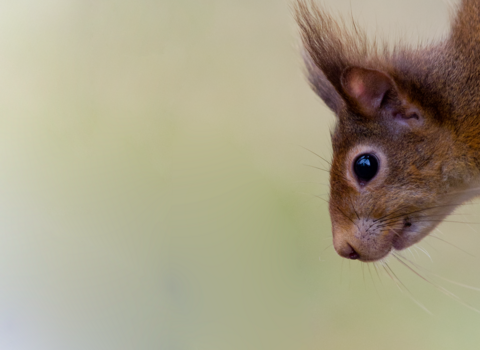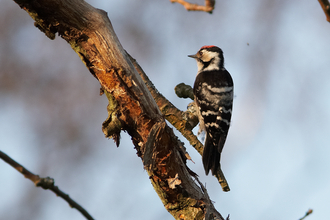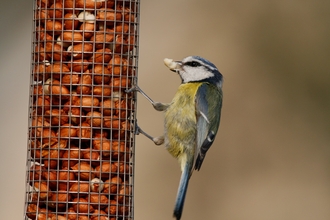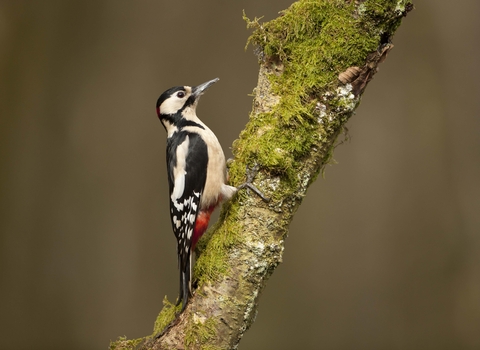
©Mark Hamblin/2020VISION
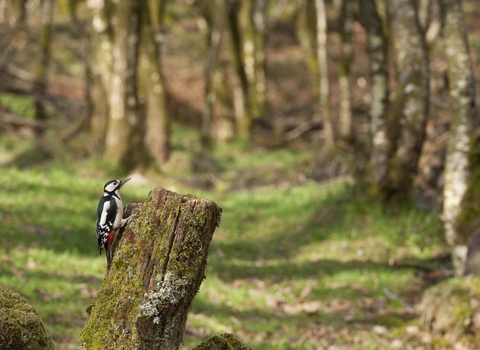
©Mark Hamblin/2020VISION
©Gillian Day
Great spotted woodpecker
The 'drumming' of a great spotted woodpecker is a familiar sound of our woodlands, parks and gardens. It is a form of communication and is mostly used to mark territories and to display in spring.
Scientific name
Dendrocopos majorWhen to see
January to DecemberSpecies information
Statistics
Length: 21-23cmWingspan: 36cm
Weight: 85g
Average lifespan: 2 years
Conservation status
Classified in the UK as Green under the Birds of Conservation Concern 5: the Red List for Birds (2021).
Habitats
About
The great spotted woodpecker is a medium-sized woodpecker. It nests in holes that it excavates in trees in broadleaved woodlands, large parks and gardens. It has a distinctive, bouncing flight, but is mostly likely to be heard, rather than seen, as it 'drums' away at a tree trunk during its breeding displays. Great spotted woodpeckers eat insects and larvae, probing tree trunks with their extremely sticky tongues to extract them from their nests. In autumn and winter, they will switch to eating berries and nuts, and will visit peanut feeders in gardens.How to identify
The great spotted woodpecker is black and white, with white shoulder patches and red underneath the tail. Males have a red patch at the back of the head. Only likely to be confused with the lesser spotted woodpecker, which is much smaller and rarer.Distribution
Widespread, although absent from northern Scotland and most of Ireland.Did you know?
In the last few years, the great spotted woodpecker has started to nest in Ireland for the first time.Watch
Great spotted woodpecker (https://vimeo.com/431481123)
Great spotted woodpecker by Tom Hibbert

